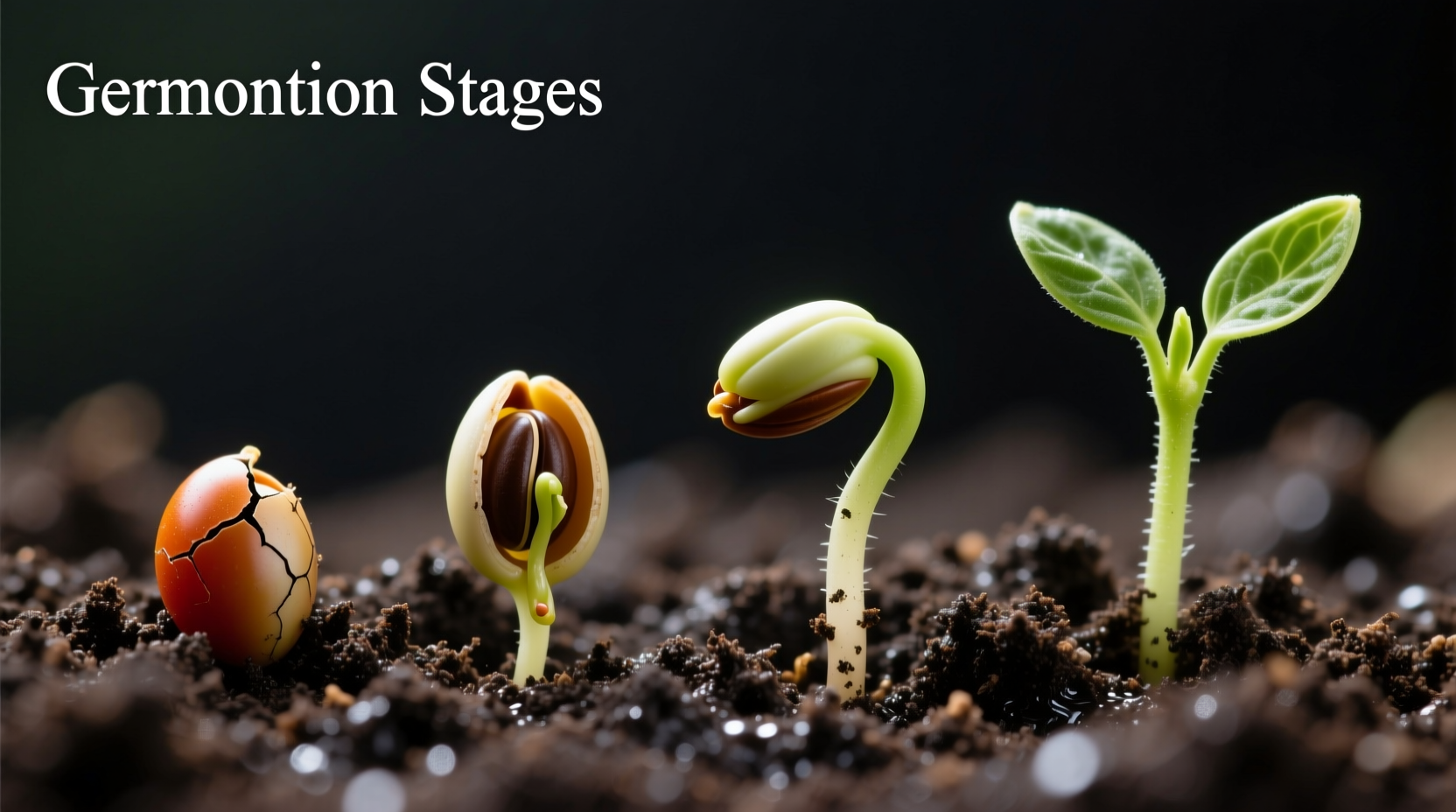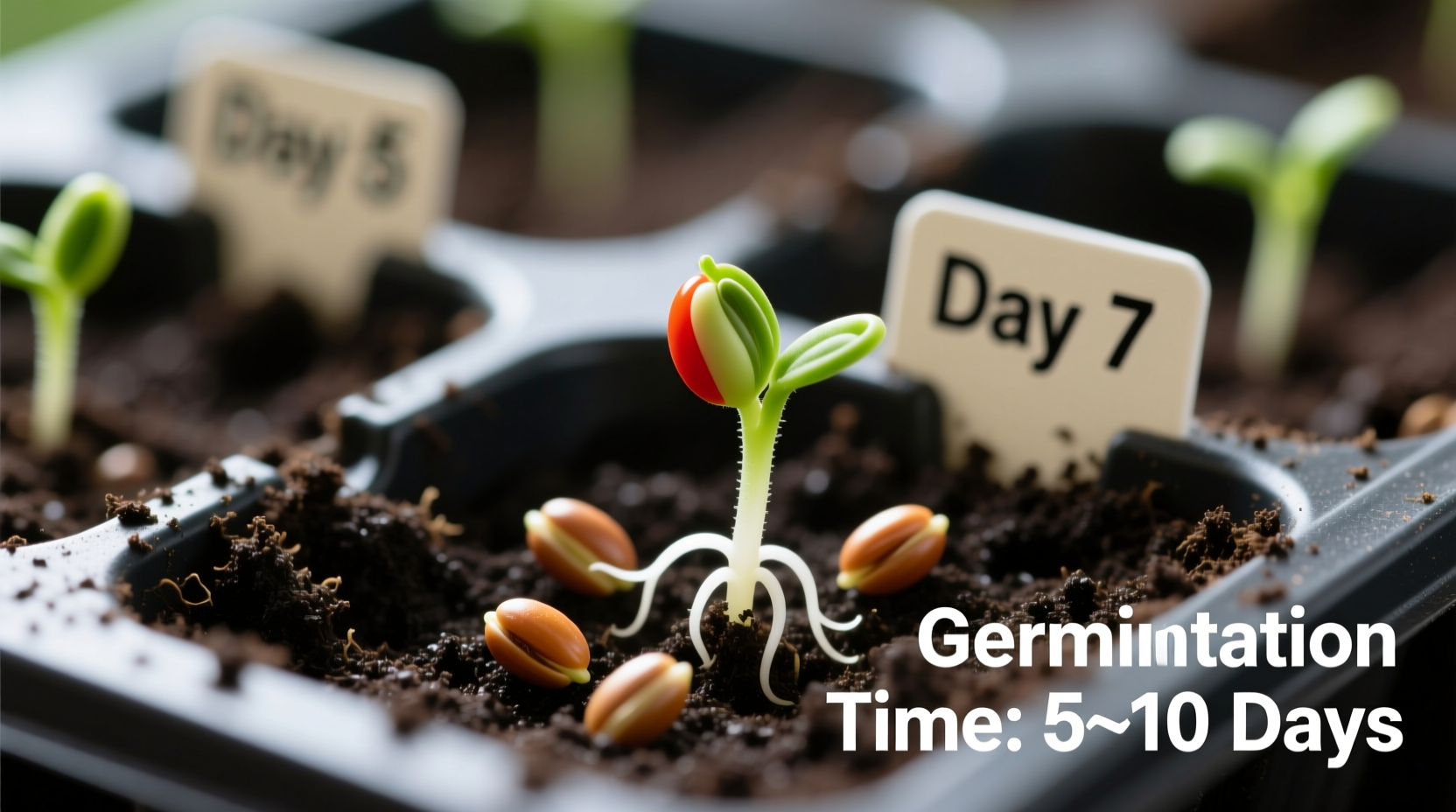Understanding tomato seed germination timing helps gardeners plan their planting schedule with precision. Whether you're starting seeds indoors for spring planting or direct sowing in warmer climates, knowing what to expect prevents unnecessary replanting and wasted effort.
What Actually Happens During Germination
Germination isn't just about time—it's a biological process where your seeds transform from dormant to active growth. Within hours of proper hydration, enzymes activate and begin breaking down stored nutrients. The radicle (first root) emerges, followed by the shoot that pushes toward light. This process requires specific environmental conditions to proceed efficiently.
| Germination Stage | Timeline | Visible Signs |
|---|---|---|
| Water Absorption | Hours 1-24 | Seed swells, seed coat softens |
| Radicle Emergence | Days 2-5 | White root tip appears |
| Hypocotyl Arch Formation | Days 4-7 | Curved stem pushes upward |
| Cotyledon Expansion | Days 5-10 | First leaves open and green |
4 Key Factors That Control Germination Speed
1. Temperature Matters Most
Tomato seeds germinate fastest within a narrow temperature range. Research from the University of Minnesota Extension confirms that 75°F (24°C) produces optimal results, with germination completing in just 5-6 days. Below 50°F (10°C), germination essentially stops, while temperatures above 95°F (35°C) can damage seeds. Most home gardeners don't realize that consistent soil temperature—not air temperature—determines success.
2. Moisture Balance Is Critical
Your seed starting mix should feel like a damp sponge—moist but not soggy. Excess water creates anaerobic conditions where seeds drown, while inconsistent moisture causes seed dormancy to re-engage. The Cornell University Cooperative Extension recommends using a spray bottle for gentle watering that won't displace seeds.
3. Seed Quality Determines Viability
Fresh seeds from reputable suppliers typically show 85-95% germination rates. Older seeds decline in viability—after three years, rates may drop below 50%. Conduct a simple paper towel test before planting: place 10 seeds between damp paper towels in a sealed bag at 75°F. Count sprouts after 7 days to calculate your actual germination rate.
4. Planting Depth Affects Emergence Time
Plant seeds at 1/4 inch depth for fastest emergence. Deeper planting forces seedlings to expend energy reaching the surface, delaying visible growth by 2-3 days. Shallow planting risks exposure and drying out. This precise depth recommendation comes from decades of field testing documented in the UC Agriculture and Natural Resources guide.

Troubleshooting Common Germination Problems
When Seeds Take Longer Than 14 Days
If your tomato seeds haven't sprouted after two weeks, consider these likely causes:
- Cold soil temperatures - Use a soil thermometer to verify actual temperature
- Old or improperly stored seeds - Check seed packet date and storage conditions
- Overwatering - Soggy conditions promote fungal growth that kills seeds
- Planting too deep - Especially problematic in heavy soils
The "Damping Off" Killer
This fungal disease causes seedlings to collapse at soil level. Prevent it by:
- Using sterile seed starting mix (never garden soil)
- Providing excellent air circulation
- Watering in the morning so surfaces dry by evening
- Avoiding overcrowded seed trays
Proven Techniques for Faster, More Uniform Germination
Pre-Sprouting Seeds (The Paper Towel Method)
For maximum control, pre-sprout seeds before planting:
- Moisten paper towels and place seeds between layers
- Store in sealed plastic bag at 75°F
- Check daily and plant when radicle is 1/4 inch long
- Handle sprouted seeds carefully by the root tip
This technique, validated by Oregon State University Extension, can reduce visible germination time by 2-3 days and ensures you only plant viable seeds.
Temperature Control Solutions
Standard home temperatures often fall below optimal germination range. Effective solutions include:
- Seedling heat mats (maintain consistent 75°F soil temperature)
- Placing trays on top of refrigerator (warm surface)
- Using thermostatically controlled propagation stations
What Happens After Germination
Once you see the first green shoots, your care requirements change significantly. Move seedlings to bright light immediately—south-facing windows often provide insufficient light, causing leggy growth. The first true leaves (distinct from cotyledons) typically appear 5-7 days after emergence, signaling when to begin light fertilization.
Remember that germination time represents just the beginning of your tomato growing journey. Proper hardening off, transplanting techniques, and ongoing care determine your ultimate harvest success. Track your germination timeline in a garden journal to refine your approach each season—you'll discover how small adjustments create significant improvements in seedling vigor and uniformity.











 浙公网安备
33010002000092号
浙公网安备
33010002000092号 浙B2-20120091-4
浙B2-20120091-4